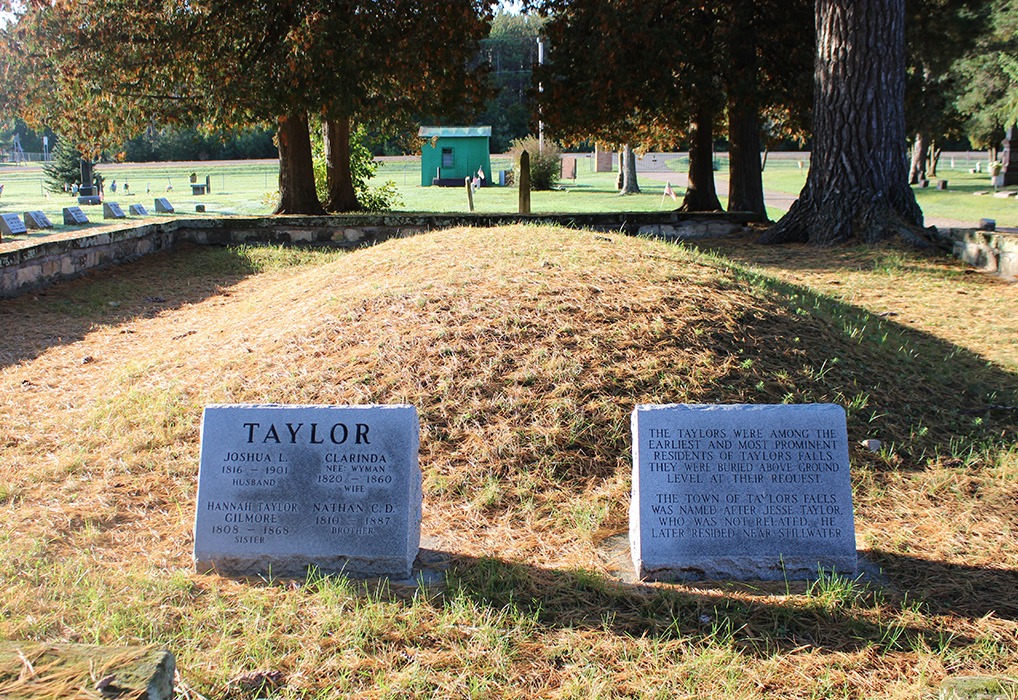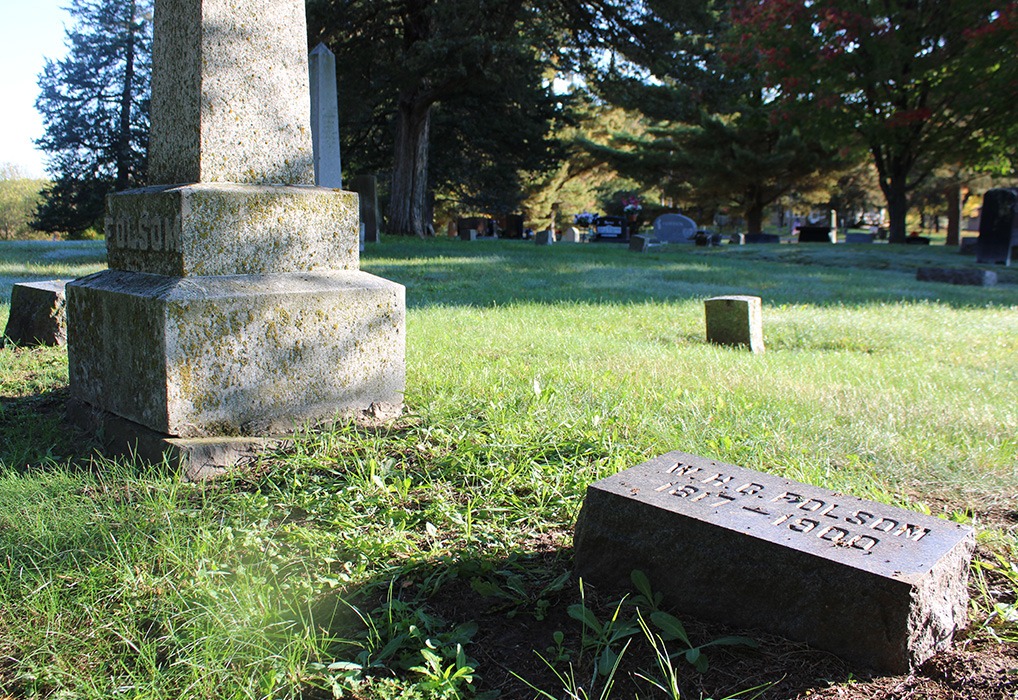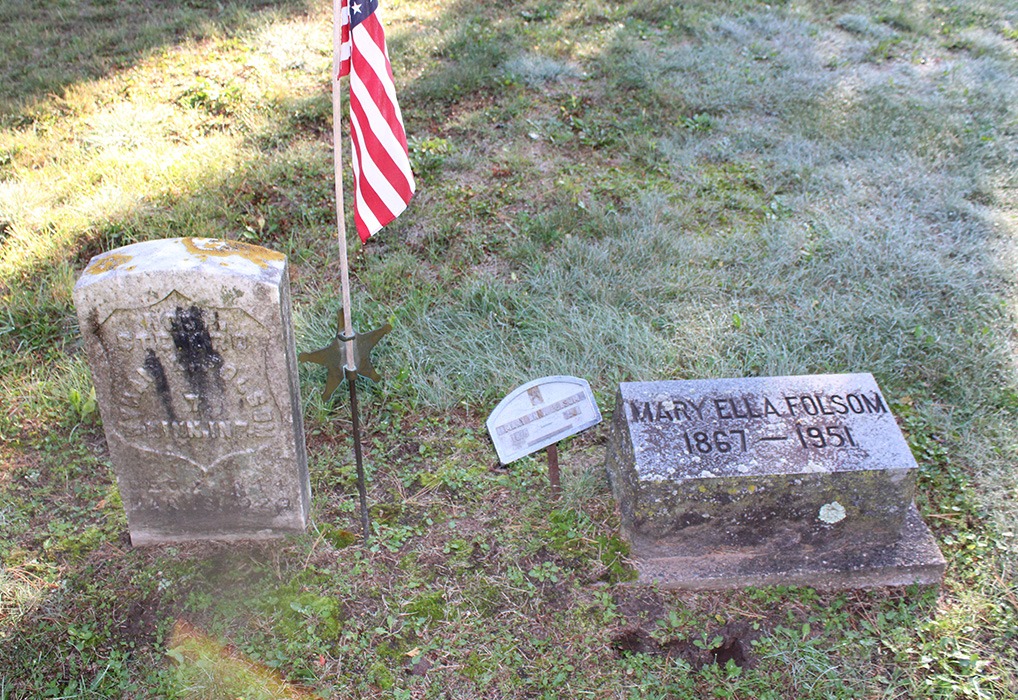History abounds in the communities of Chisago Lakes! From the oldest Swedish pioneer cemetery in Minnesota to a historic logging village, we’ve got your “day trip” full of history planned. Read on to experience cemeteries and history in Chisago Lakes.
What to Bring
Start your Cemeteries and History day trip at South Green Lake Cemetery in Chisago City
Green Lake Trail (Hwy 23)
Many early settlers are buried at this scenic location, including the family that lived in what would become the famous Karl Oskar House. Enter the cemetery and head to the rows directly behind the “South Green Lake Cemetery” sign. Just a few headstones from the fence you’ll find Frank Noren, who spent his first winter here in America in 1869 in the Karl Oskar House. Head towards the lake to find the tombstone of Frank’s first wife, Maria Charlotta Linn Noren. Maria was the oldest child of Carl and Lena Kajsa Linn, and was born in the house now known as the Karl Oskar House (your next stop!).
INSIDER TIP:
Spend some time exploring the cemetery then take a minute to enjoy the view at the seating area overlooking Green Lake.

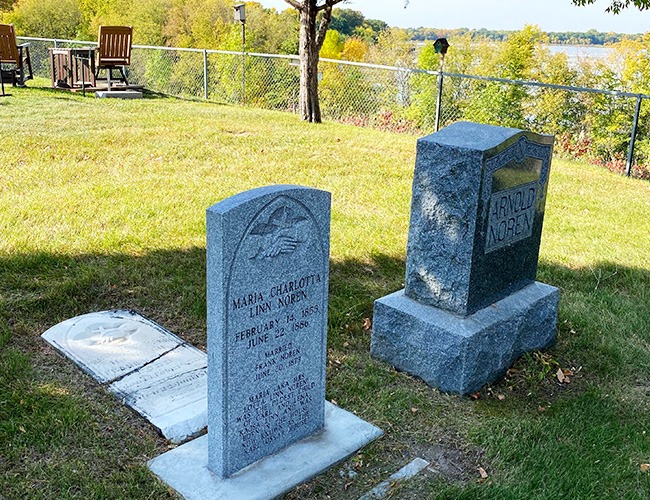
Visit the Karl Oskar House and nature trails at Ki-Chi-Saga Park in Lindström
29061 Glader Boulevard
Ki-Chi-Saga Park boasts beautiful nature trails, walk-in campsites, the historic Karl Oskar House, a segment of the Chisago Lakes Water Trail, and the nearby historic Glader Cemetery. Meaning “fair and lovely waters” in Ojibwa, the park also features two rentable shelters, campsites, a softball complex, children’s play structure, picnic shelter, volleyball and horseshoes.
Find a parking spot then explore the Karl Oskar House and surrounding area. Swedish immigrant Carl Linn built this home in 1854, and it became the inspiration for the Minnesota home of the Karl Oskar family in Swedish author Vilhelm Moberg’s series The Emigrants. The house and books became synonymous with one another and the Linn family farmhouse was moved from its original site 1/4 mile west to this location in 1995 and eventually renamed the Karl Oskar House.
HISTORY HIGHLIGHT:
The Linn family in front of their farmhouse, now the Karl Oskar House. L to R: Luther (with horse), Carl (sitting), Wilhelmina, Lena Kajsa, Maria Charlotta (whose grave you saw at South Green Lake Cemetery).
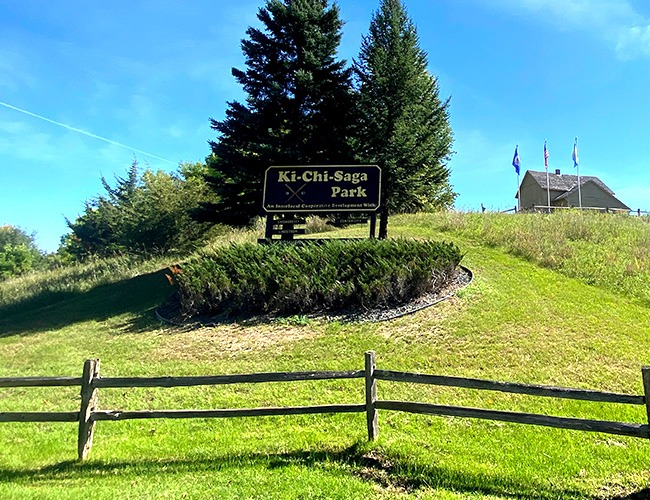
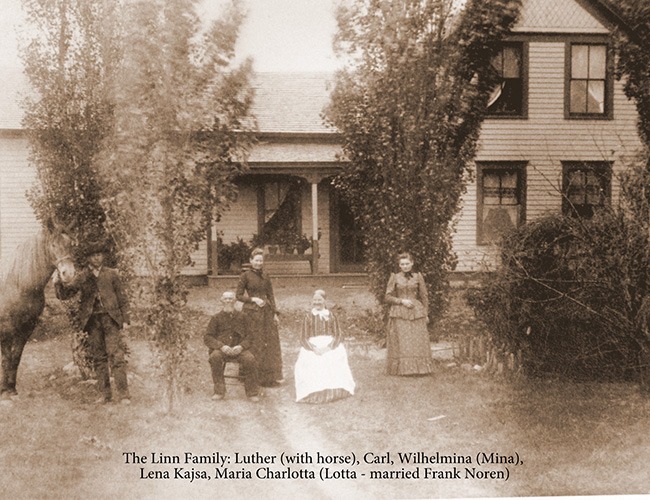
Find famous characters "buried" at Glader Cemetery
Drive or walk the trails ⅛ mile east of Ki-Chi-Saga Park on Glader Blvd. to Glader Cemetery. This is the oldest Swedish pioneer cemetery in Minnesota. Park on the roadside then take some time to explore the tombstones while listening to the sounds of South Center Lake. Find the Linn tombstone to see the resting place of Lena Kajsa and Carl Linn.
The early inhabitants of this region
Minnesota became a state in 1858 and takes its name from the Dakota, Mni Sota Makhóčhe, translated as “cloudy waters.” This area is located on unceded land of the Wahpekute, part of the Dakota Oyate, whose shared territory stretches across much of the middle of the North American continent. Thousands of European immigrants, mainly German, Irish and Scandinavians, settled on land freshly wrested from the Dakota and other indigenous people.
HISTORY HIGHLIGHT:
Karl Oskar and Kristina Nilsson from The Emigrants series are fictionally buried here. Swedish Royalty visited on September 13, 1996.
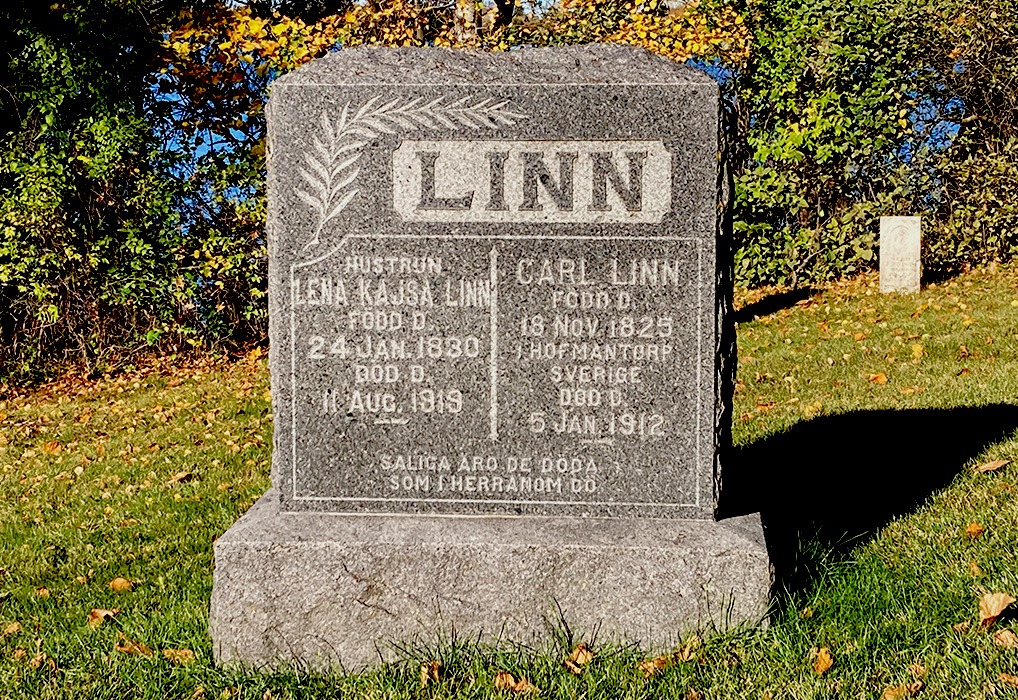
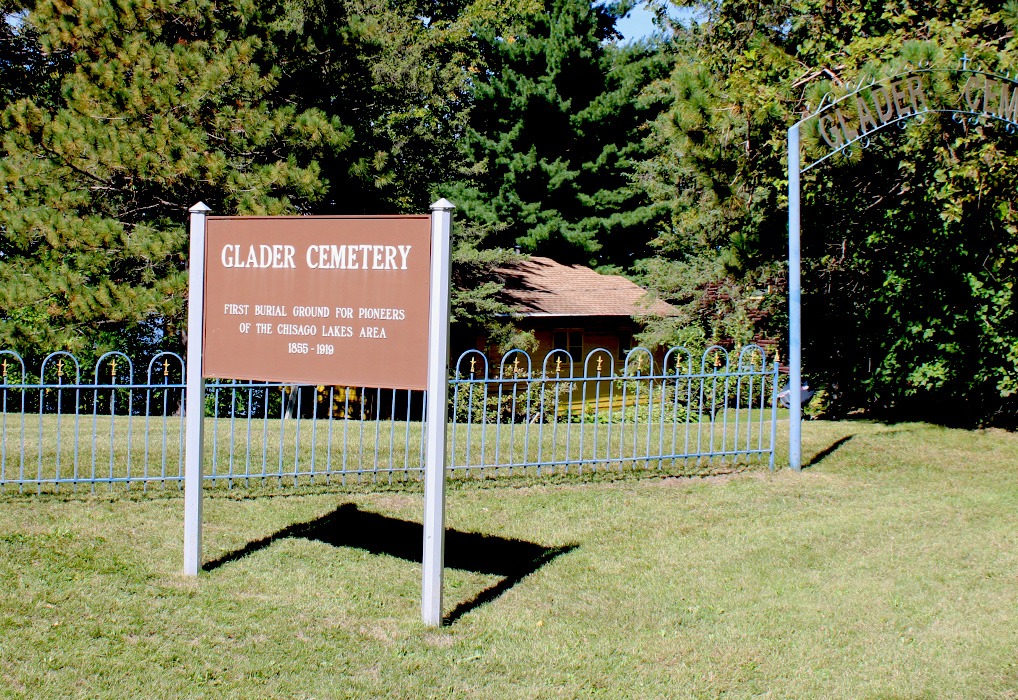
Time for Lunch
You’ve visited two cemeteries, a historic house, and a nature trail. Now it’s time to eat! Head into Lindström to Gustaf’s on Main Eatery (sandwiches, salads, soups, ice cream) or grab items for a picnic at Sprouting Out in Shafer (crackers, beverages, snacks, and the famous Eichten’s bison and cheese products). Once you’ve eaten or purchased your picnic items, head east on Hwy 8 towards your next stop.
Explore the historic Franconia Landing and Townsite
Head south on Hwy 95 for a half-mile then turn left on Franconia Trail. Enjoy the scenery of the trees and rolling hills as you make your way down the hill into the historic village of Franconia. Drive past historic homes from the mid-to-late 1800s, turning right onto Summer Street and crossing Lawrence Creek. Drive around the village and imagine Franconia in its heyday: a bustling logging and milling town with one hundred fifty homesteads, a school, and many businesses. At the end of Summer Street, you’ll come to Franconia Landing. Take in the views of the St. Croix River and picture steamboats, wooden piers stretching into the river, and a riverside sawmill.
HISTORY HIGHLIGHT:
Gustaf’s on Main Eatery is located in the 1890 Gustaf Anderson house. Gustaf came from Stockholm in 1864. He participated in the Montana Gold Rush and struck it rich! He was known as “Guldgubben” (The Old Gold Man). The house is on the National Register of Historic Places.
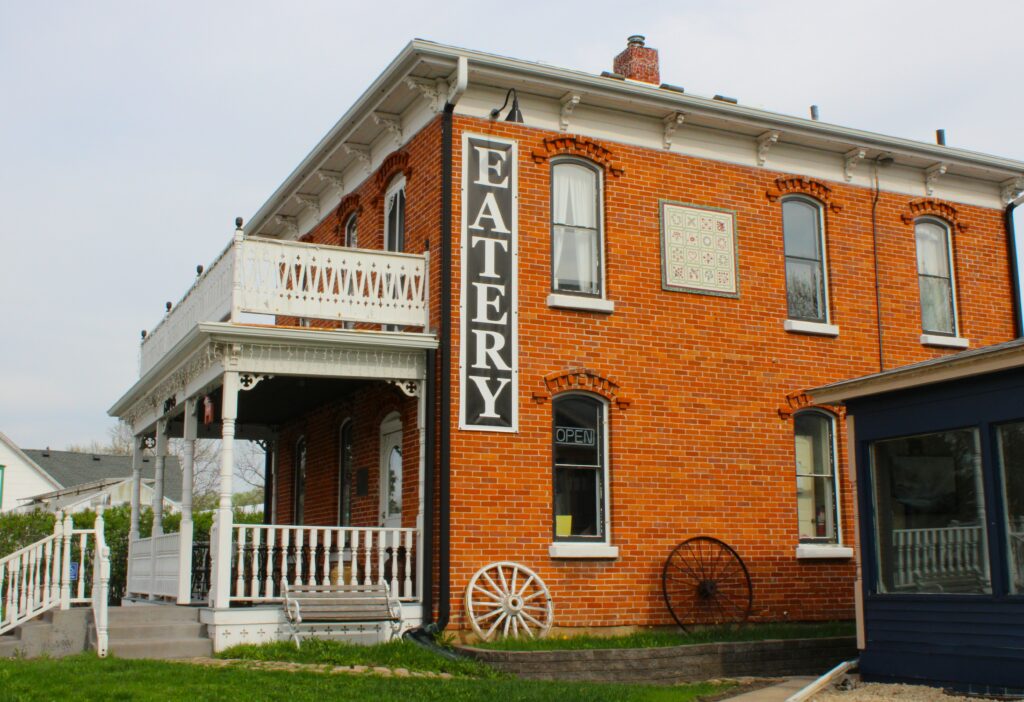
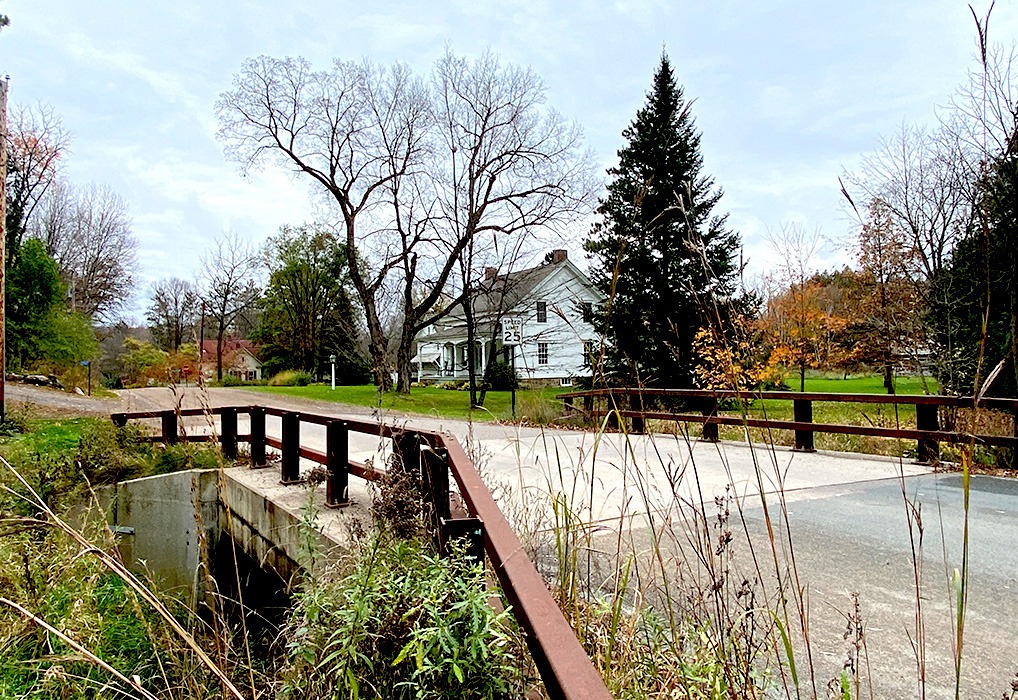
Learn about prominent immigrant families at Kahbakong Cemetery in Taylors Falls
For your final stop, travel to the 1855 Kahbakong (meaning “falls” in Ojibwe) Cemetery to learn about three early settlers of Taylors Falls. Park on Mulberry Street and enter the cemetery to find your first family of interest.
Walk up the central roadway until you come to a large mound on the left. Here you’ll find the resting places of Joshua and Clarinda (Clara) Wyman Taylor, and their children Hannah and Nathan. The Taylors were among the earliest immigrant residents of Taylors Falls and were buried above ground at their request. Joshua Taylor came to the area in 1840 in the employ of the St Croix Falls Lumber Company.
Walk back on the center road towards the entrance and keep an eye out on the left for the Folsom family name. Find W.H.C. Folsom and his wife Mary Jane (Wyman). William Henry Carman Folsom left his family in Maine at age 15 and worked his way westward as a laborer and logger to the St. Croix River Valley by the 1850s. He is best known locally as a lumber baron but also served as the County Treasurer, State Representative, and was involved in writing the MN Constitution and the design of the state seal. He was a member of the cemetery association that started Kahbakong Cemetery.
His home was built on Angel Hill in 1855 and is now open to the public. Look down the line for many of his family members who are also buried here, including son Wyman, who was a Civil War veteran. Clarinda Wyman Taylor, whose grave you just saw at the Taylor plot, was a sister of Mary Jane Wyman Folsom.
Cross the road and look for the Stannard plots. Lucas Kingsbury Stannard was a Taylors Falls school board member, for which the Kingsbury School was named. The school was finished in 1888, eventually razed, and is now is the location of the Angel Hill Apartment building.
Stannard married Harriet Stevenson in 1858. Harriet was a niece of W.H.C. Folsom and had been the first teacher at the 1852 Town House School, still located on Government Road in Taylors Falls.
HISTORY HIGHLIGHT:
